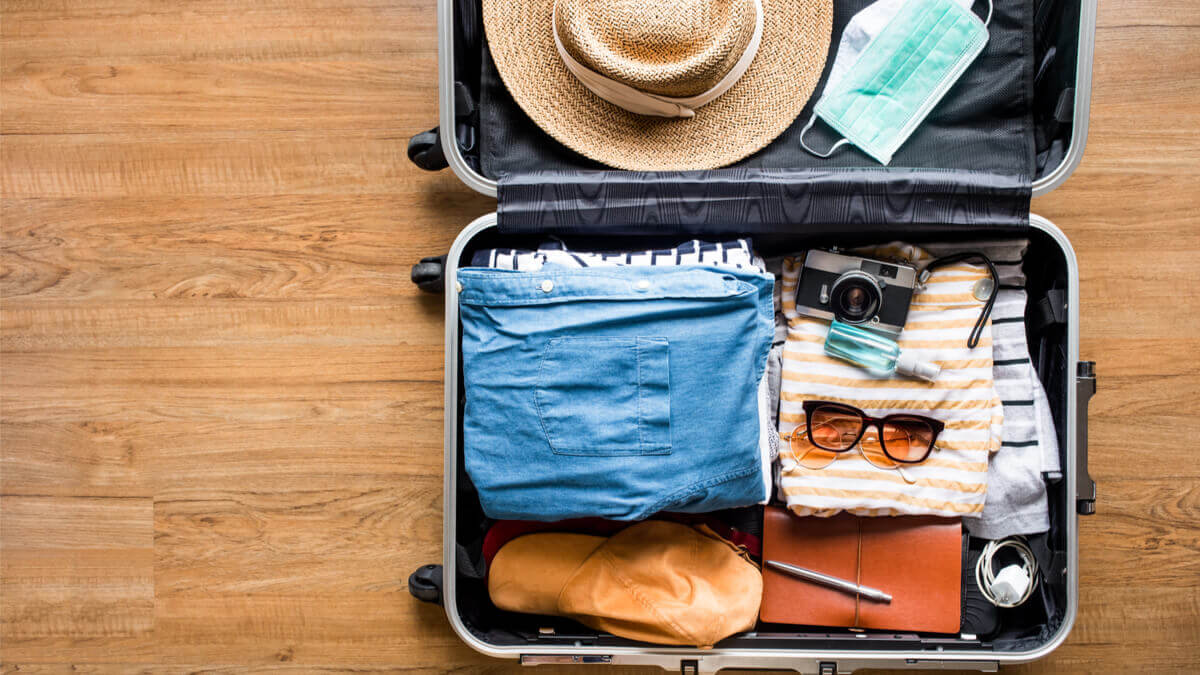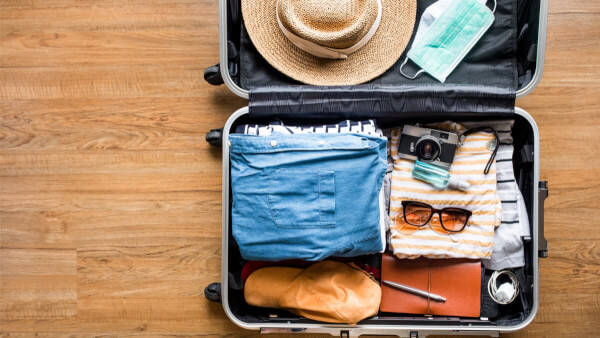How much does it cost to charter a yacht? [2025 guide]
Explore the costs of chartering a yacht, including factors that influence prices, types of charters, and additional expenses.

Got a big European adventure coming up? Check out our travel to Europe checklist, to make sure you’re fully prepared.
While you’re getting set up for your trip, why not also take a look at Wise as a good way to manage your spending across euros and most other European currencies, with low fees from 0.43% and the mid-market rate whenever you need to convert from dollars¹.
Let’s kick off our checklist for traveling to Europe with some of the most important things - without the right documents in place you may not even be allowed on the plane, so getting everything lined up in advance is essential.
You’ll need a valid passport for everyone traveling. The US State Department² reminds travelers to double check the validity of passports - in particular, look at children’s documents as these are issued for only 5 years rather than the 10 offered for adults.
It’s also important to note that the Schengen countries have a strict rule requiring 6 months validity left on a passport - if yours is running out sooner, you’ll need to renew it.
Much of Europe is covered by the Schengen agreement, which lets US citizens enter any of the 27 participating countries, visa fee, for up to 90 days in any 6 month period³.
However, as each European country may have its own visa requirements you’ll need to double check all the conditions for any European country you’re visiting.
Having adequate travel insurance is essential, and can give you reassurance that there’s help at hand if something goes wrong on your visit to Europe.
Compare different policies, looking at cover provided for medical care, baggage and belongings, and problems if you experience delays, cancelations or other unavoidable issues as you travel.
Explore the world with your handy Wise Multi-Currency Card!
Spend money in over 150+ countries at the mid-market rate — and avoid hidden fees while you’re at it.
| With Wise, you can: |
|---|
|
Heading abroad? Bring Wise along for the journey!
Please see Terms of Use for your region or visit Wise Fees & Pricing for the most up to date pricing and fee information
Each trip to Europe is different, but there are a few handy things to do to prepare, no matter where you’re headed.
Before you book flights, double check the requirements and recommendations for any vaccinations needed for travel⁴. Generally being up to date with standard US vaccinations will be enough, but checking up to date information before you travel is always a smart plan.
Don’t end up stuck without access to your funds when you travel. Let your bank or card issuer know you’re going abroad, to avoid your card being blocked.
It’s also important to check if your card will incur extra charges when spending in a foreign currency - foreign transaction charges are common and can push up prices when you’re away from home by around 3%.
An international debit card from a non-bank provider like Wise can be a helpful addition, to help you keep costs down.
Packing for Europe can vary a lot. What you need if you’re headed to Greece for the summer is quite different to packing for Finland to spot the Northern Lights over winter. Here are a few things to consider when you plan.
Double check the likely weather at the time of year, in the destinations you’re headed to - Europe has a pretty broad range of climates and weather can be changeable.
It’s smart to pack for all eventualities, and to also add some spare clothes to your hand luggage in case your bags were to be lost on connecting flights.
Make sure you also have copies of essential documents and information in both your hold and hand luggage, just in case things go wrong.
Check your phone will work in Europe, and don’t forget to include all your chargers when packing.
European plugs are different to the standard US plug, so adding in a few universal chargers will also help.
If you’re planning on longer trips which involve extended travel time, you may also want to include an external battery pack to recharge on the move.
Many major European countries have good public transport networks, with much of mainland Europe connected easily by rail, as well as flight networks.
Major countries in mainland Europe have pretty strong rail networks, which are reliable and cheap. However, coverage isn’t universal, so check out the likely services available in the countries you want to visit before you make any firm plans.
It’s helpful to know you can get rail passes⁵ which cover travel for fixed numbers of days, which can be very good value if you’re rallying on rail during your visit.
Check out the public transport options for the cities you plan to visit in advance. Major capital cities like London have extensive public transport options which let you tap in and out with a bank card conveniently.
Some smaller cities may have more limited options, and you may still need to buy specific tickets or travel cards before boarding in some locations.
As you’d expect, European cities are also well connected by plane, with journey times often very short. Many budget airlines offer quick hops between European cities, but it’s worth checking how close the airports are to the places you want to visit, as cheaper tickets may use less convenient local airports.
For shorter journeys you’ll often find that the combined flight, waiting and security time is longer than taking a train - double check based on your personal plans.
Europe is a very varied continent - to check for major considerations before travel, take some time looking at the State Department country page⁶ for your destination.
While English is broadly spoken in some parts of Europe, you’ll still find that it’s not understood everywhere once you get off the beaten track.
Check out the local languages wherever you’re headed, and be prepared to get by with Google Translate or gestures if you run into difficulties!
It’s also worth remembering that not all European countries use the Roman alphabet. Greece uses the Greek alphabet, while Bulgaria and some other Eastern European countries use the Cyrillic alphabet, which can make reading notices a bit trickier.
If you’re a foodie, there are many dream destinations in Europe. While you’ll be able to get more or less any style of cooking in cities, more local areas are likely to focus on the regional dishes of the area.
This is great if you’re interested in exploring Europe through the food - but bear in mind, it may also mean that some preferences and needs are less well catered for. If you have dietary needs, it’s worth checking in advance what the likely local options will be before you travel.
Use our checklist before traveling to Europe to make sure you’re fully prepared before you get to the airport. And pop a Wise Multi-Currency Card in your packing to make your money go further while you’re away, too.
Sources checked on 08.21.2023
*Please see terms of use and product availability for your region or visit Wise fees and pricing for the most up to date pricing and fee information.
This publication is provided for general information purposes and does not constitute legal, tax or other professional advice from Wise Payments Limited or its subsidiaries and its affiliates, and it is not intended as a substitute for obtaining advice from a financial advisor or any other professional.
We make no representations, warranties or guarantees, whether expressed or implied, that the content in the publication is accurate, complete or up to date.

Explore the costs of chartering a yacht, including factors that influence prices, types of charters, and additional expenses.

Explore the best luxury travel destinations and tips for singles over 50.

Explore the best luxury solo travel experiences with our ultimate guide.

Everything you need to know about renting a car in Europe with your US license

Everything you need to know about international summer camps.

Understand what Worldpackers is, how it works and whether it's a safe platform.